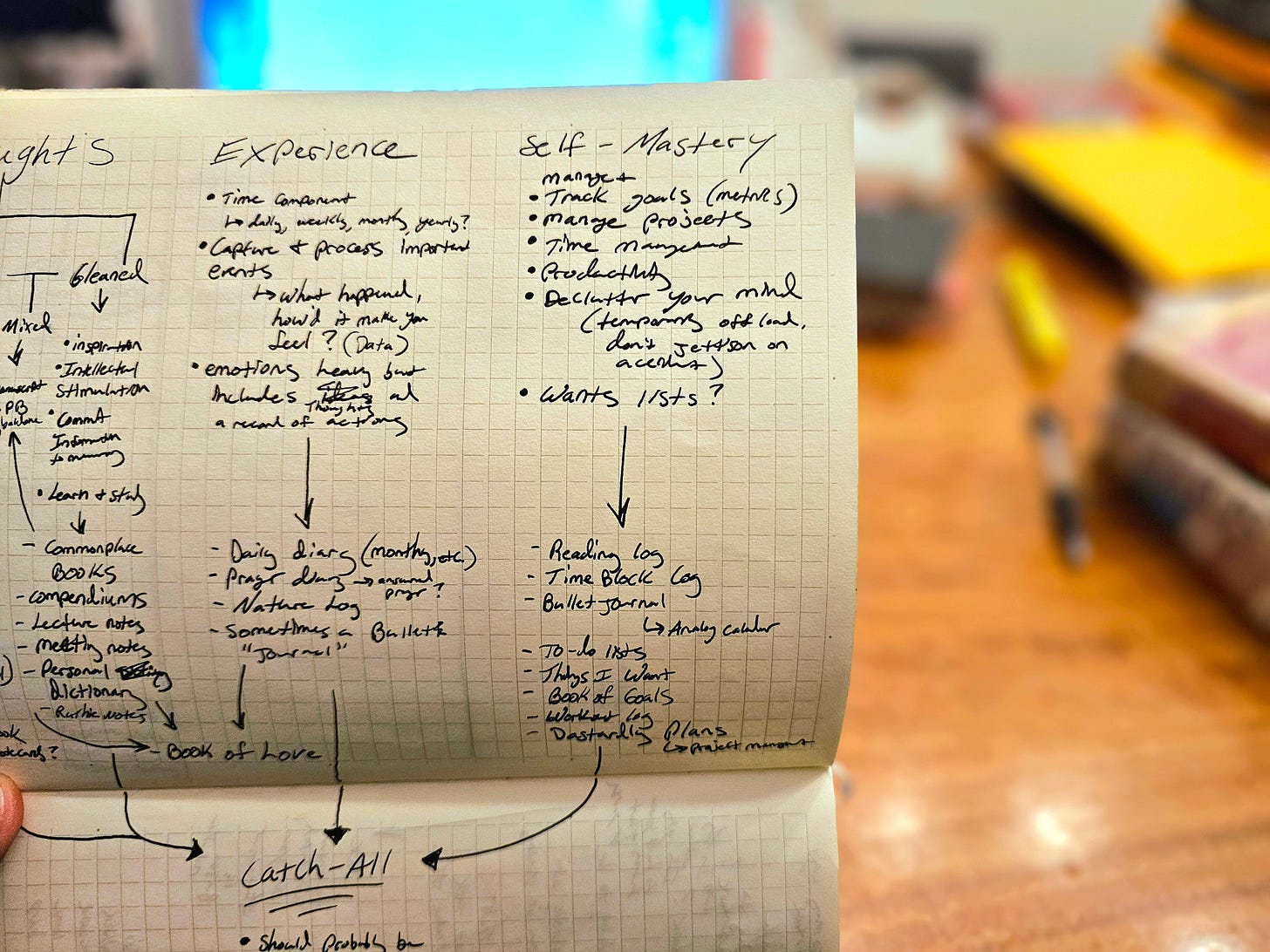The Best Way to Use a Notebook | The Ultimate Guide pt. 4 of 5: Self-Mastery
How to Use Notebooks to Organize and Improve Yourself
I’m writing the ultimate guide to using a notebook in a series of 5 posts.
You’ve found the 4th post in the series. I didn’t mean for this to be such an in-depth treatment but then again, I didn’t expect to become the accidental notebook czar of YouTube either but here I sit amongst a ridiculous pile of notebooks. It’s dangerous business setting out on an education, you never know where your studies will lead you—in my case, it led to analytic philosophy and then to using the tools I learned in my formal study to “chart the logical space” of all notebook methods.
In part 1, I introduced the series and explained that I’ll be cataloging 30+ notebook methods across my three main categories of thoughts, experience, and self-mastery. Then I covered the first half of the Thoughts category: self-generated thoughts. Read that post here: Part 1 - Collecting Your Thoughts
In part 2 I covered what I call ‘gleaned thoughts’, that is, the thoughts you’ve gleaned from others. So instead of using a notebook to collect or think through your own thoughts, the methods in that post will help you collect, store, and retrieve the thoughts of others. Read the second post here: Part 2 - Collecting Thoughts from Others .
In part 3, I covered notebook methods in the experience category. These notebook methods help you log your experiences and reflect on your emotions. Read that third post here: Part 3 - Logging Your Experience .
In the post you’re reading now, part 4, I’ll cover notebook methods in the self-mastery category.
And then in part 5 I’ll finish with the pocket catch-all notebook which is a blend of all three categories.
You’re going to hit a pay wall here soon. These kinds of posts are my first takes on the content of my forthcoming book, Journal Like a Philosopher, so I can’t have them just out there in the wild. But this process of writing them up for paid subscribers has been both motivating and rewarding. It’s really good to get feedback from paid subscribers who are invested in my stuff and I feel good about answering your questions in detail. I’ve already reshaped some stuff for the book based on feedback I’ve got from my paid subs here. So thanks to everyone of you who supports my work and helps me communicate more clearly.
So let’s jump in with 7 or 8 more notebook methods, this time from the experience category. This time I share more pictures from my own notebooks as examples for the methods considered.
Self-Mastery
Desiderata
Track Goals (metrics)
Manage different projects
Time management
Productivity
Declutter your mind
Wants/Purchase List
Notebook Methods for Mastering Yourself
Reading Log (example picture below)
Reading logs are one of my absolute favorite productivity tools. They are super simple to use. Make a daily reading goal. I like to use page numbers as my daily goal. Right now I’m in the midst of lots of different writing projects, so I’m taking a break from page number goals, but usually I try to hit at least 50 pages minimum per day. I had to build up to that from like 5 pages back in 2013 but over time I built up my reading capacity. I also have uses time as a goal before but I don’t like that metric as much—it’s not as beneficial for keeping me on track with what I want to do. I will often set timers to make sure I have uninterrupted time to read—usually 60 to 90 minutes—but if I can get 50 pages read in my first allocated time slot then great. If not, I’ll need more slots.
So come up with a daily page number goal. How many pages can you actually read every day on a consistent basis? Can you add a couple more pages to stretch yourself? Just one more? Do that. Progressive overload. Build up and add some pages after a few months.
Once you have your daily page number goal,



